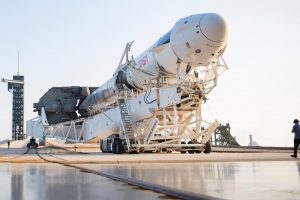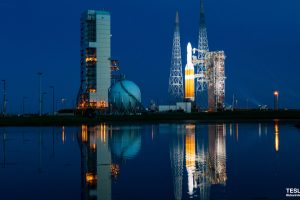- 🚀 The Polaris Dawn mission set several new milestones during its five-day journey in space.
- 👨🚀 A commercial spacewalk was performed, marking the farthest one ever conducted from Earth at 435 miles.
- 🧑🎤 Sarah Gillis became the youngest person to perform a spacewalk at age 30.
- 🎓 SpaceX collaborated with 31 institutions, including NASA and the U.S. Air Force Academy, to conduct 36 experiments.
- 🌌 The mission passed through the Van Allen Radiation Belt, gathering crucial data on space radiation effects.
- 🛰️ The successful mission encourages more ambitious future commercial space missions, aligning with SpaceX’s goal of making life interplanetary.
- 🏆 The mission was celebrated online by notable figures, including Elon Musk and Bill Nelson, as a significant milestone for commercial spaceflight.
Space exploration has witnessed numerous milestones, but few have been as remarkable as SpaceX’s Polaris Dawn mission. This five-day journey in space not only set new records but also paved the way for the future of commercial space missions. Let’s dive into the achievements of the Polaris Dawn mission and explore how it is shaping the future of space exploration.
The Milestone Mission
A Journey of Firsts
The Polaris Dawn mission was a trailblazer, achieving several firsts in space travel. Among the mission’s most notable accomplishments was a commercial spacewalk performed by crew members at a staggering 435 miles above the Earth. This feat makes it the farthest spacewalk ever conducted, setting a new benchmark for commercial space endeavors.
Breaking Age Barriers
The mission was also a testament to the changing dynamics of space exploration, highlighted by Sarah Gillis’s historic spacewalk. At just 30 years old, Gillis became the youngest person to perform a spacewalk, showcasing the opportunities available for young professionals in this field.
Collaborative Efforts and Experiments
Building on Collaborative Synergy
Participation in the Polaris Dawn mission wasn’t limited to SpaceX alone. The mission saw collaboration with 31 prestigious institutions, including NASA, the U.S. Air Force Academy, and several universities. This collaborative effort resulted in the execution of 36 diverse experiments, marking significant strides in fortifying the commercial space exploration landscape.
Exploring the Unknown: Van Allen Radiation Belt
One of the mission’s critical scientific pursuits involved traversing the Van Allen Radiation Belt. This pathway enabled the crew to collect vital data about space radiation’s effects on the human body, offering significant insights for future missions aiming to venture further into the cosmos.
Paving the Way for Interstellar Ambitions
Towards an Interplanetary Future
The success of the Polaris Dawn mission is not just a testament to SpaceX’s prowess but also a crucial step in the company’s grand vision of making life interplanetary. By pushing the limits of what is possible in space, missions like Polaris Dawn are foundational to achieving loftier goals, such as Mars colonization.
Celebrated Success and Global Recognition
The mission’s success did not go unnoticed, as it was widely celebrated across social media platforms. Esteemed figures such as Elon Musk, SpaceX CEO, and Bill Nelson, the 14th NASA Administrator, acknowledged the mission as a monumental leap forward for commercial space endeavors. Their endorsements further highlight the mission’s significance in the broader narrative of human space exploration.
Conclusion: Charting the Future of Space Travel
The Polaris Dawn mission has set a high bar for future space excursions. By achieving unprecedented feats and fostering robust partnerships, the mission has laid down the blueprint for subsequent commercial missions. As SpaceX continues to push boundaries, the dream of interplanetary travel inches closer to reality, promising a future where humanity thrives beyond Earth’s confines.





